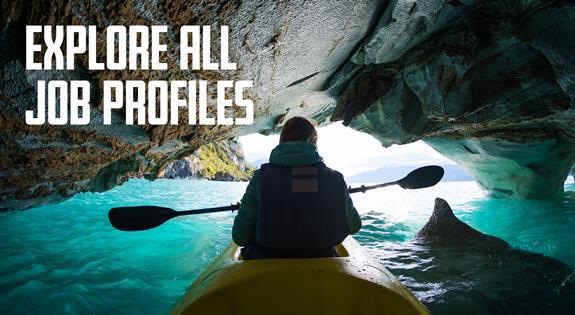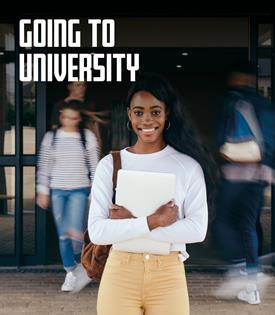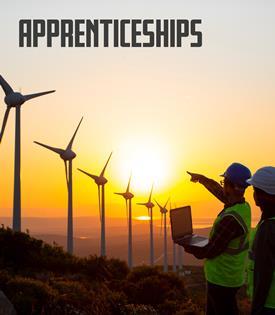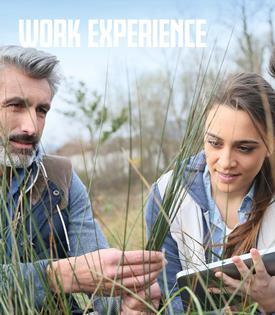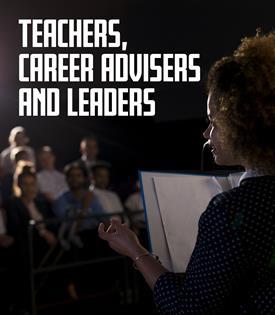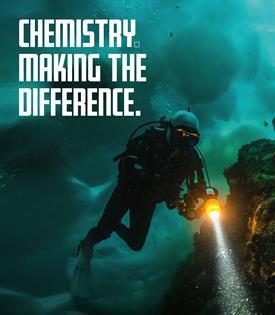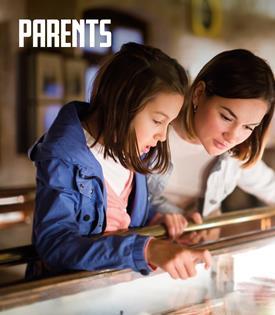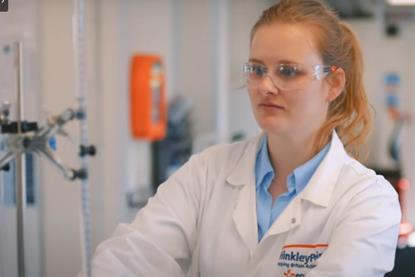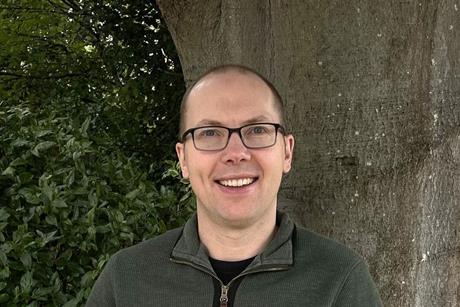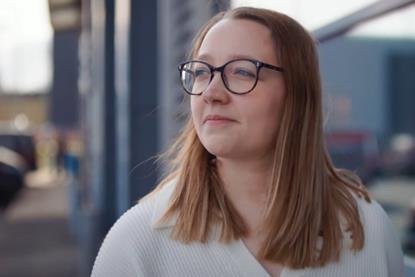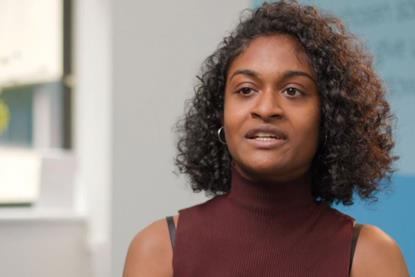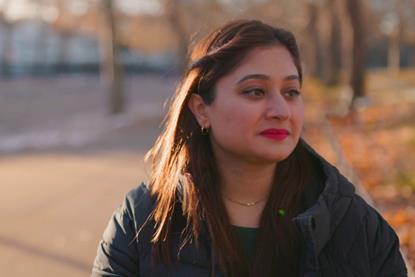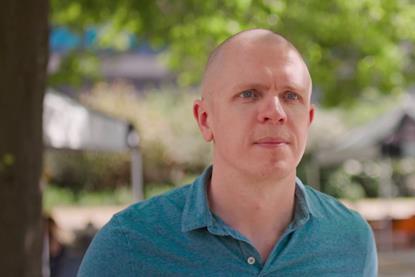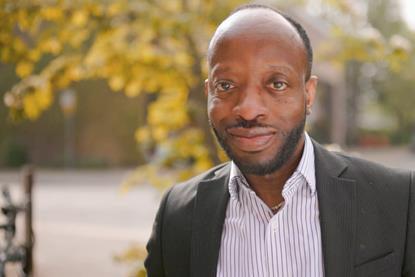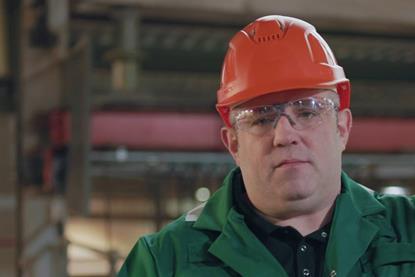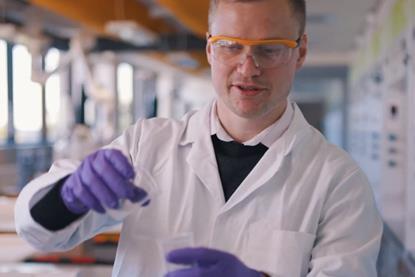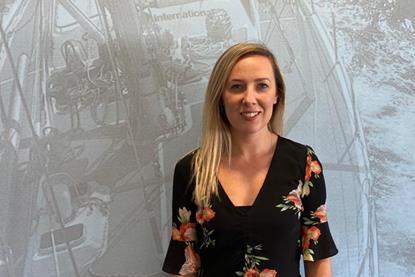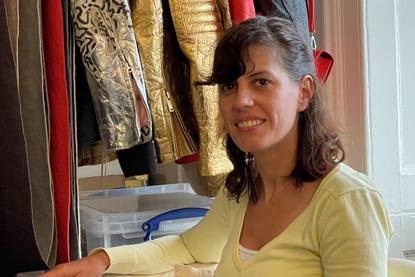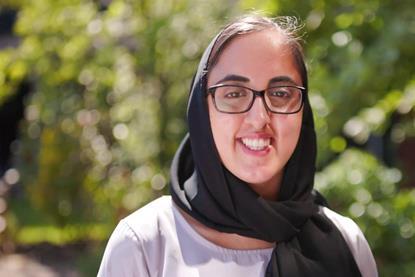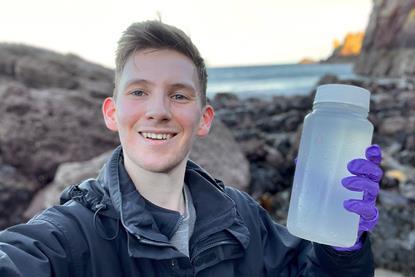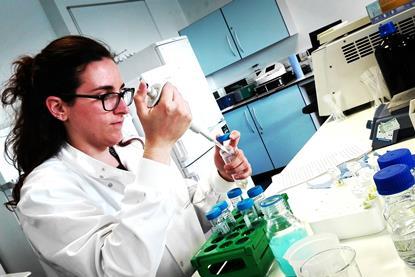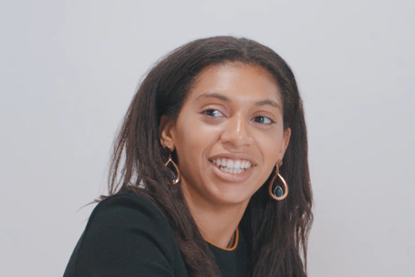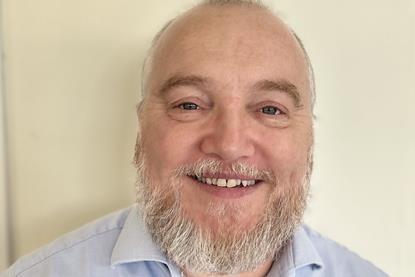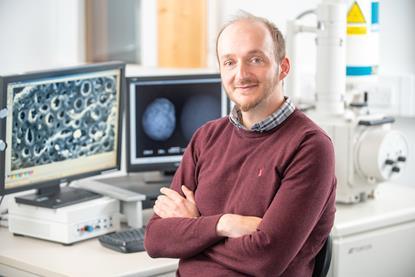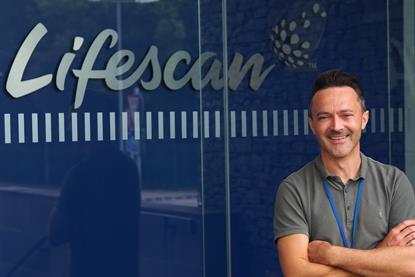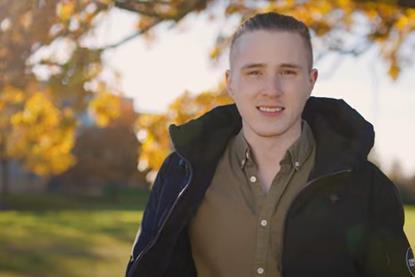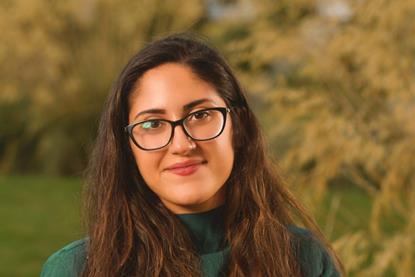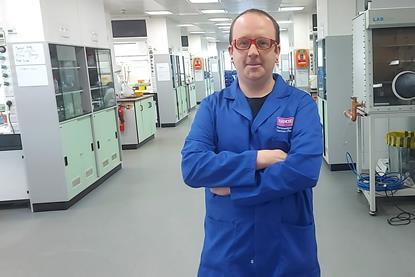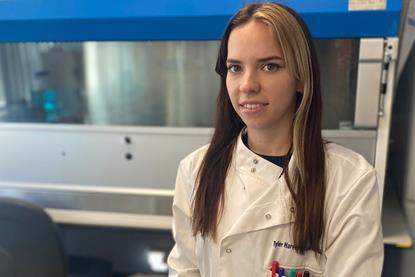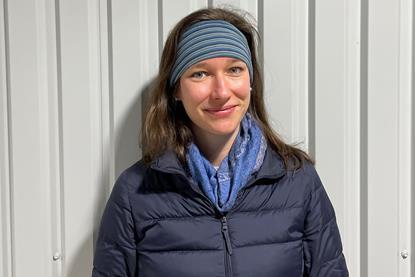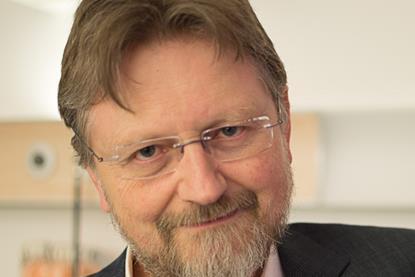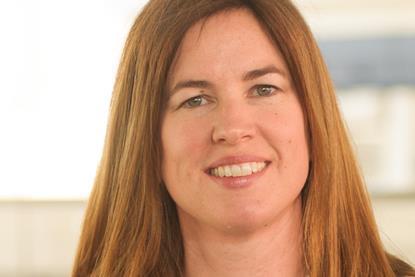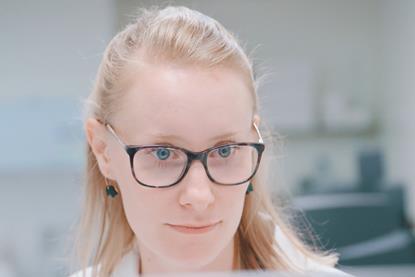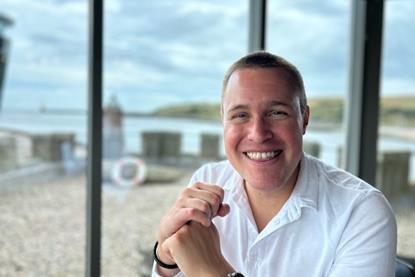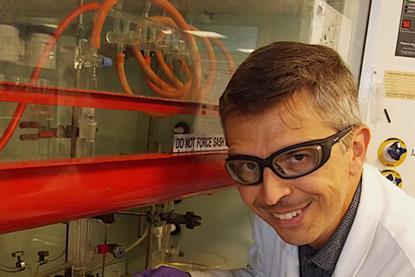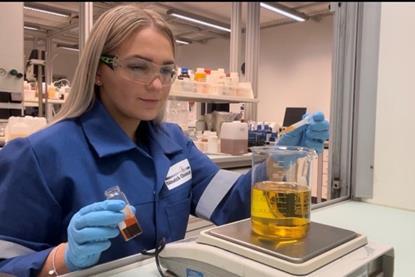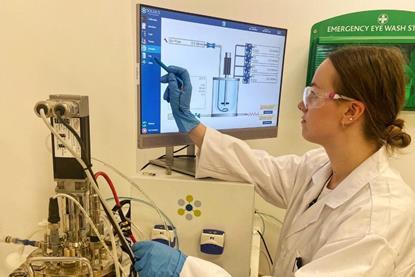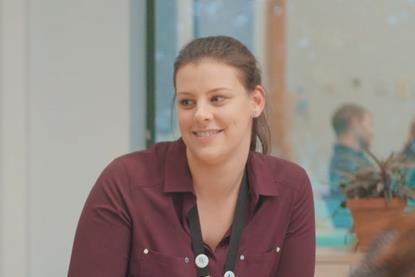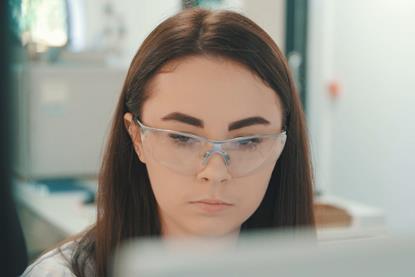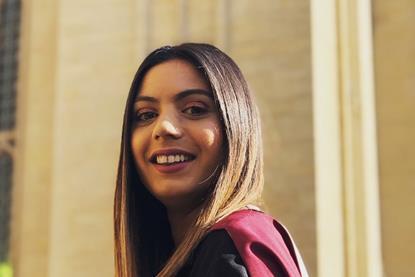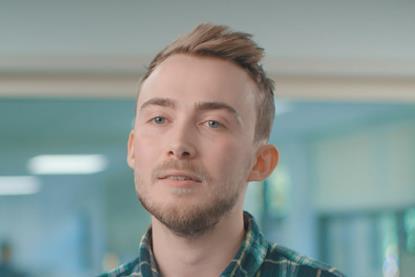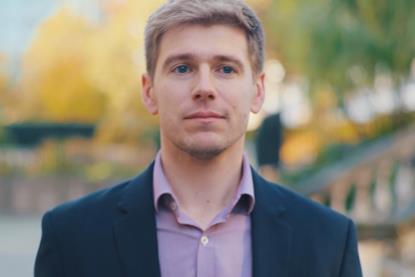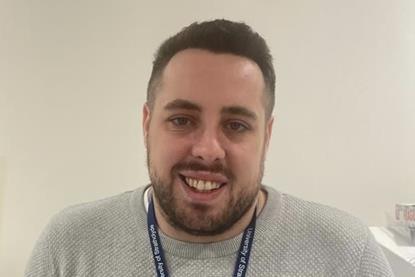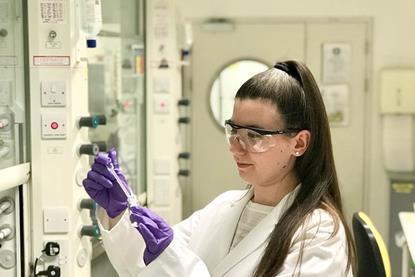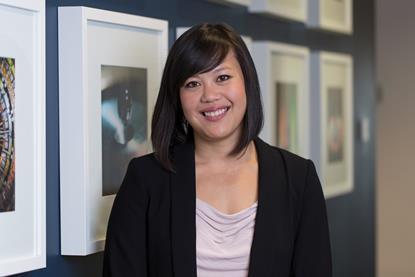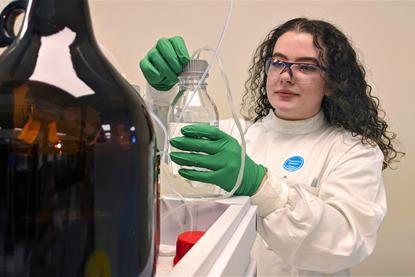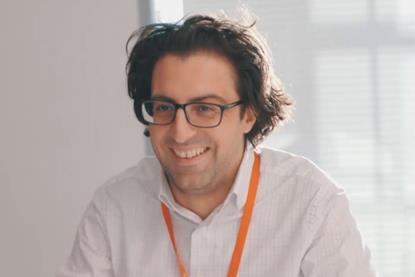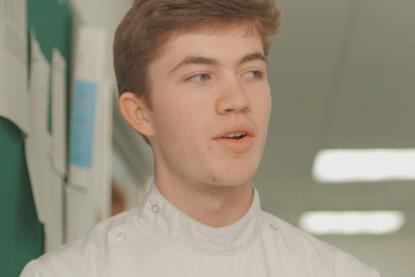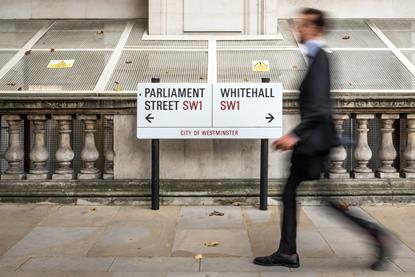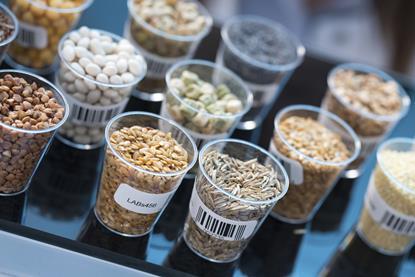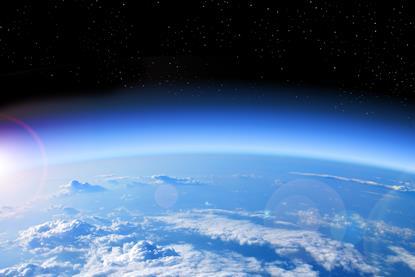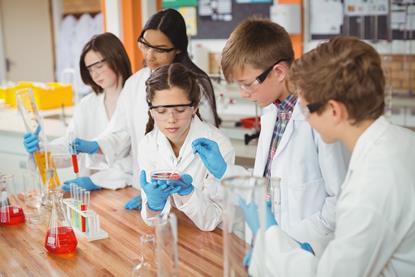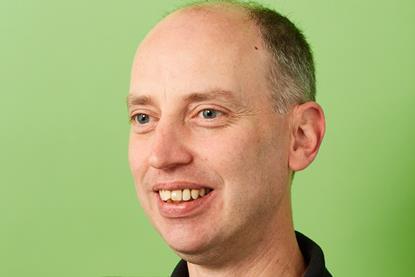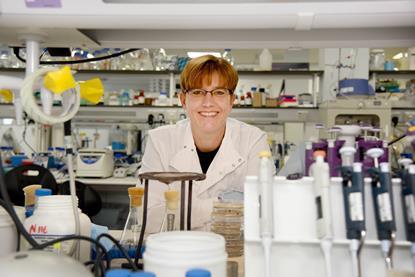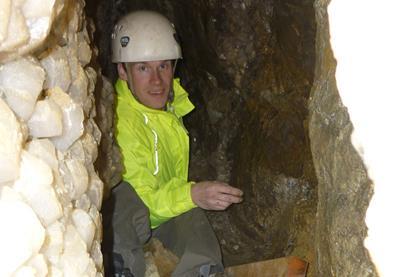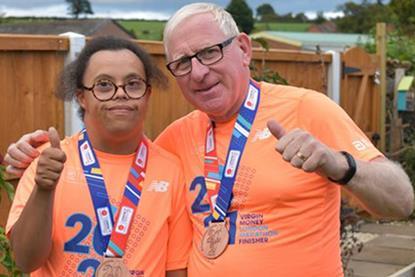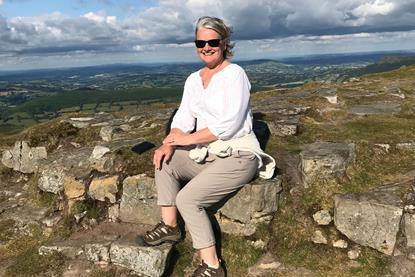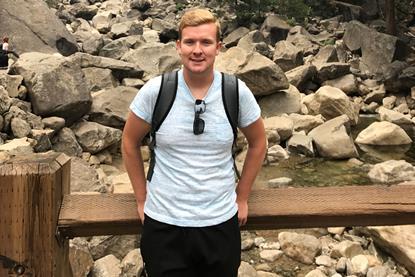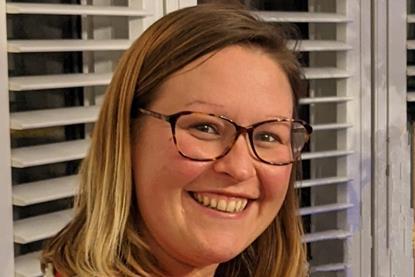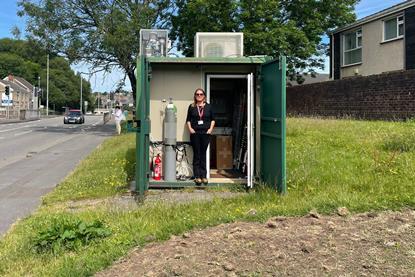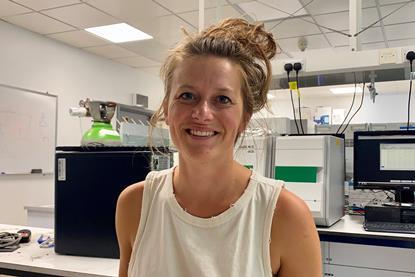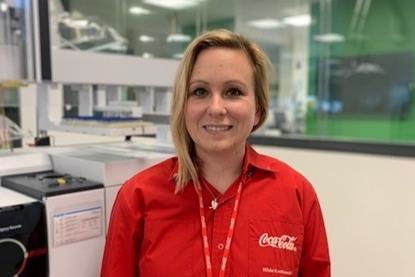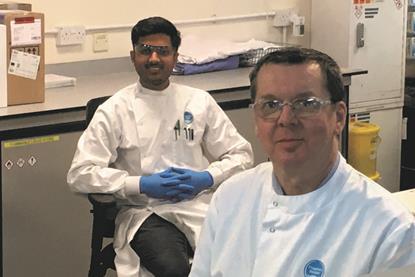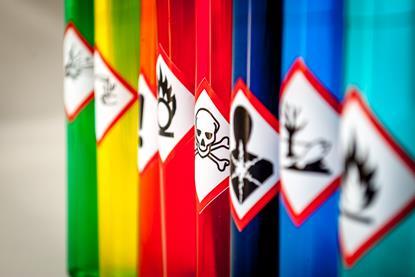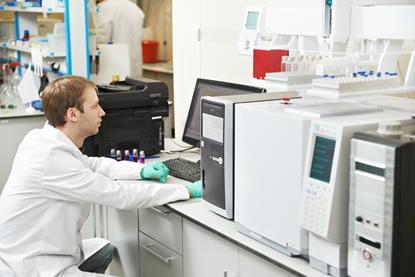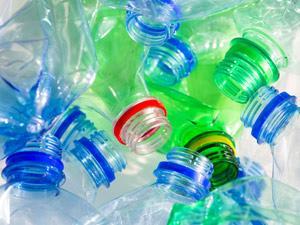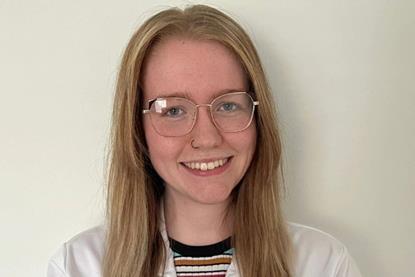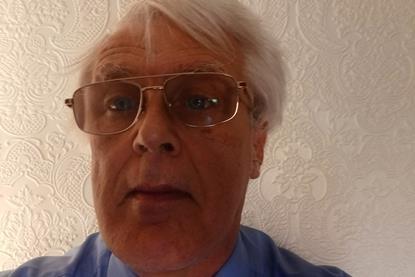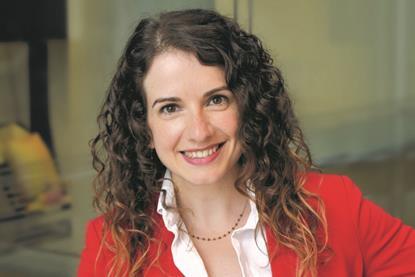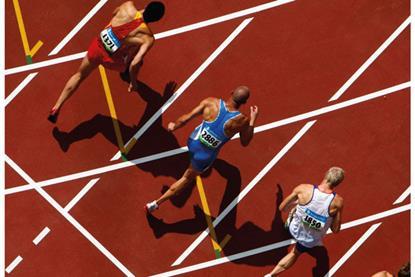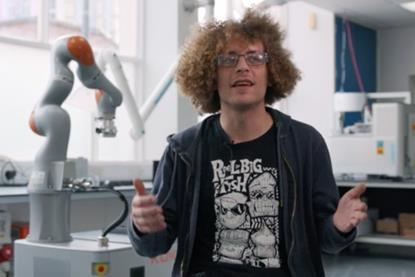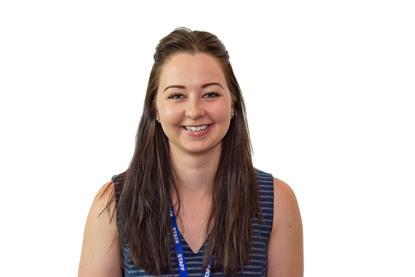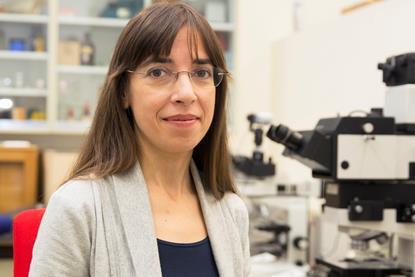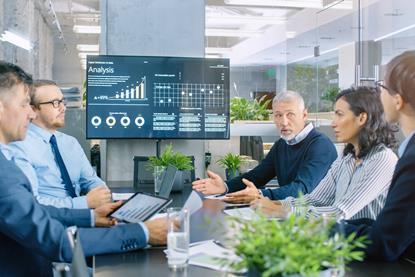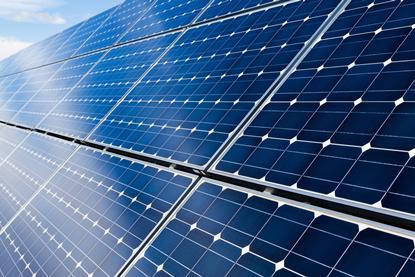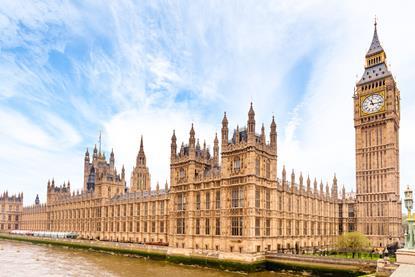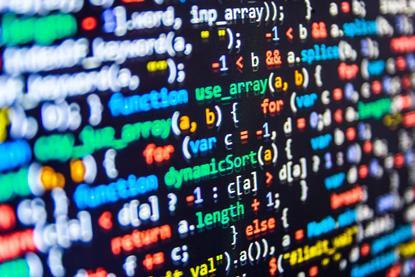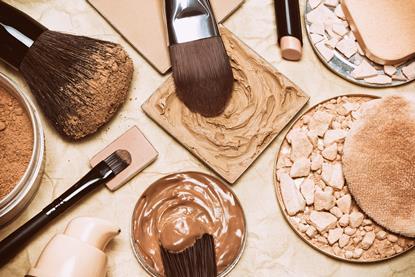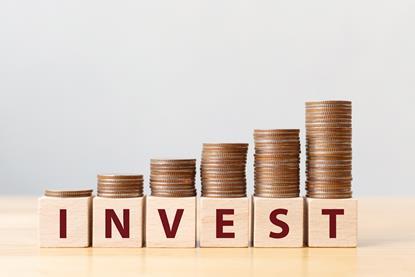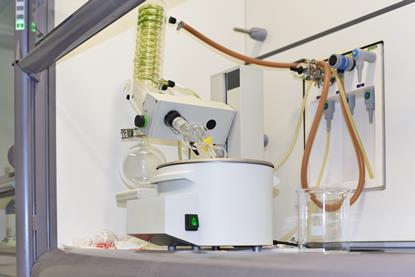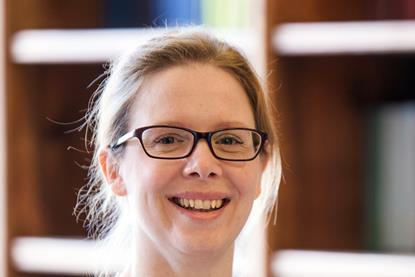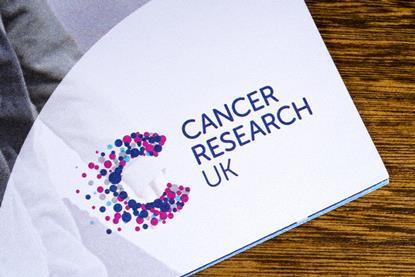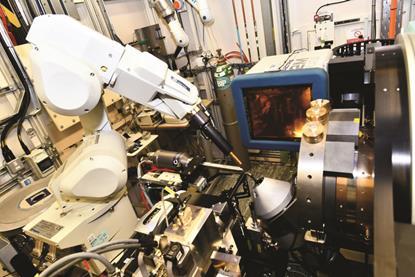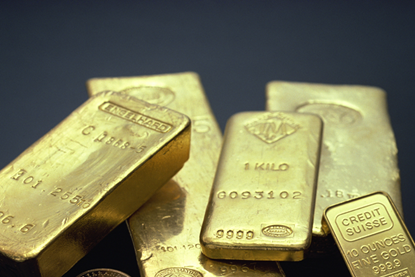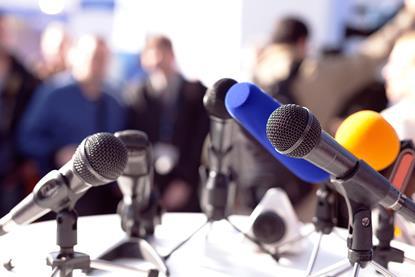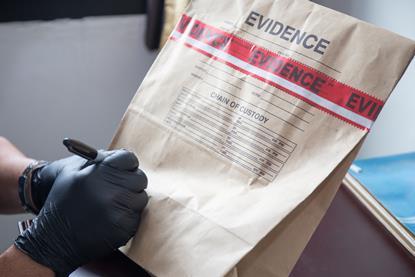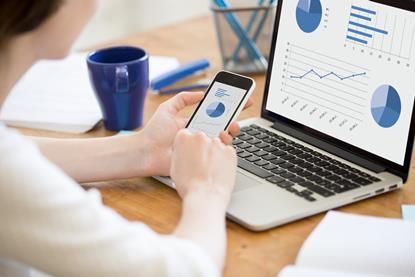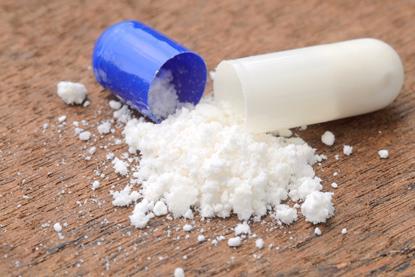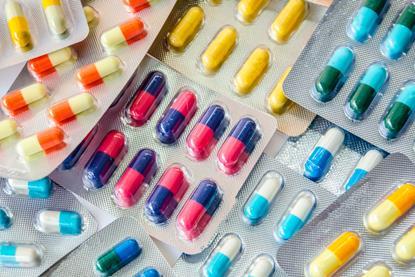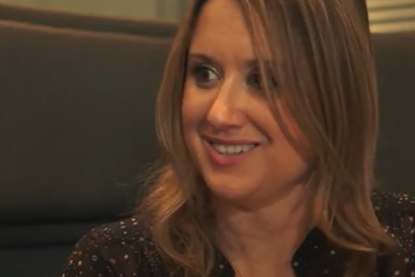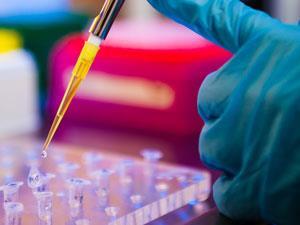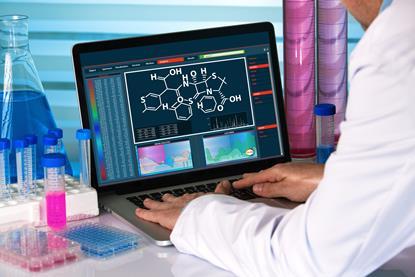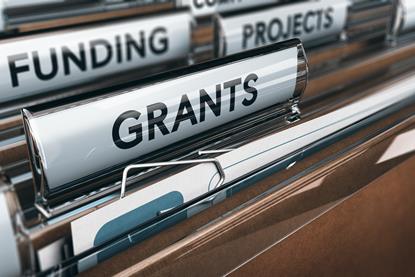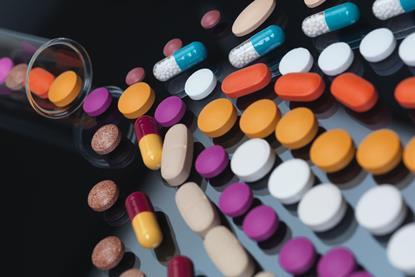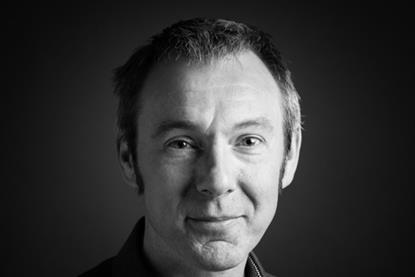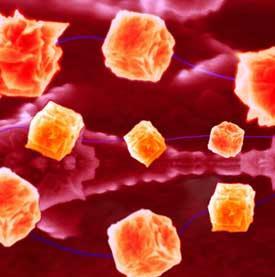Career stories
Real-life stories from real-life chemical scientists. Find out what jobs in chemistry can involve and the qualifications that will get you there
Latest career stories
Commercial director, chemical manufacturing
Mike is helping industries make chemicals in a cleaner, faster way
Peptide chemistry apprentice
Christina uses chemistry to make medicines work better and help more people.
Chemistry engineer, nuclear
Beth safeguards water quality to ensure nuclear power stays clean and sustainable.
Latest career stories
Commercial director, chemical manufacturing
Mike is helping industries make chemicals in a cleaner, faster way
Director of chemistry, biotechnology
David is driving the discovery and development of new medicines at a new biotechnology company
Technical director, catalytic design
David designs and makes catalysts that are helping to develop sustainable aviation fuels
Browse all career stories
Research scientist, microplastics
Sophie is stopping microplastics going into the environment when you wash your clothes
Cosmetics, technical services chemist
Sharlotte makes environmentally friendly, safe cosmetic products
Scientist, food and pharmaceuticals
Taryn uses scientific instruments to test our food and medicines and make sure they are safe
Principal air quality consultant
Saba’s air quality assessments help clients worldwide to minimise their air pollution
Scientific leader
Richard uses digital technologies to design and select compounds for new medicines
Senior principal scientist
Misbah uses computers to predict which catalysts will be best at removing harmful pollutants from road-using vehicles
Senior software developer
Aruna improves the search capability of a crystal structure database used by scientists to make new discoveries
Senior science manager
Paul’s circular approach to manufacturing sugar means there is virtually zero waste and other useful products like bioethanol
Chief executive officer
Daniel is helping the world to reach net-zero carbon emissions by creating a way to turn manufacturers’ waste carbon dioxide into chemicals that can be used in everyday products
Section leader, wind
Maria develops new and innovative coatings for wind turbines so that they can generate more renewable energy for longer
Market development manager
Vikki helps develop sustainable packaging with less carbon dioxide impact and the ability to reduce food waste
Head of research and sustainability
Raquel develops a sustainable fabric called Piñatex that comes from pineapple leaves that would otherwise be burnt
Research fellow, battery recycling
Zubera is discovering ways to recycle precious materials from electric car batteries
Marine biogeochemist
Ben’s research focuses on how the biology and chemistry of our oceans are responding to climate change in order to learn how we can protect our marine environments and ecosystems
Research & development team leader - smart food labels
Giorgia leads a team at a small company that is helping to fight food waste by developing smart labels technology
Analytical technician, plastics
Celine modifies the molecular structure of plastics so they can biodegrade in the natural environment
Director of chemistry, biotechnology
David is driving the discovery and development of new medicines at a new biotechnology company
Technical director, catalytic design
David designs and makes catalysts that are helping to develop sustainable aviation fuels
Water technologist – research fellow
Dr Pap’s research is supporting the transition to a net zero, circular economy in the UK water sector
Principal scientist, medical devices
Dave uses his chemistry skills to help people with diabetes by making sure their blood sugar monitors work properly
Quality officer, genomics research
Gary helps scientists make breakthroughs by ensuring the data they use is accurate and reliable.
Co-founder and machine learning lead of tech startup Ignota Labs
Layla builds cutting-edge AI algorithms that improve the drug discovery process by exposing unsafe medicines early on
Professor and enterprise, partnerships and innovation lead
Ian’s research mitigates climate change and has led to the production of energy-generating coatings for buildings
Scientific consultant
Sam provides advice on batteries and energy storage devices to customers across the world
R&D chemist
Océane researches ways to make packaging biodegradable
Teaching technical specialist
Mike ensures that chemistry practicals run smoothly for everyone using the lab. He’s also involved in Manchester University’s apprenticeship scheme and attracting future technicians
University laboratory technician apprentice
Tyler carries out experiments linked to covid-19 reseach and lung diseases
Solar technology engineer
Ryley develops cutting-edge solar cell technology to make solar power cheaper and more efficient so that this renewable source of energy can become more mainstream
PhD researcher
Lizzie investigates new battery materials for lithium-ion batteries which power devices such as smart phones, laptops and electric vehicles
Chief technology officer and co-founder of Lixea, a sustainable solutions company
Florence is developing a way to produce raw materials that are renewable, reusable, recyclable and toxic free
Professor of biorefineries
Professor Sixta converts cellulose, a renewable resource found in wood or plants, into products like yarn for making clothes
Professor of environmental chemistry
Patricia uses chemistry to develop new ways of detecting, monitoring and analysing quantities of environmental pollutants
Research innovations manager
Margot is at the cutting-edge of science developing ways to make plastic biodegrade quickly and explaining this to others
Tender and contract manager
Adam uses his chemistry knowledge to help win business for his company.
Chief scientist at agritech company, Lambda Energy
Boris’ technology delivers a larger crop of fruits and vegetables while cutting carbon emissions
Laboratory scientist apprentice
Kasia makes lubricants to improve the performance of metal-cutting tools while also studying towards a degree in chemical science
Bioleaching lab technician
Emma collects and processes precious metals that are extracted from electronic waste products
Radioactive waste consultant
Ian ensures radioactive waste is handled safely and also applies waste management techniques to technology that reduces risks of climate change
Bioanalytical scientist
Claire’s work involves stress testing new medicines in various stages of drug development to ensure they are robust and reliable before being released onto the consumer market
Analytical chemist
Tilly does research on human breath samples to potentially diagnose conditions like asthma and infectious diseases including cancer
Associate scientist, pharmaceuticals
Holly develops new medicines at a global pharmaceutical company, AstraZeneca alongside completing her degree apprenticeship
Development chemist, printing and inks
Mariam shares how she makes custom inks for their customers so they can safely print on food (like eggs) and food packaging providing vital information to the public
Research assistant
Lewis contributes to cutting-edge scientific research using specialist equipment to potentially diagnose diseases like cancer sooner
Patent attorney
Charley explains how he makes an impact by helping inventors get legal protection for their new inventions and medicines
Environmental chemist
James helps protect the environment by assessing the risks to life from certain chemicals in soil, water and air
Sustainability manager
Mike discusses his vital role in advising businesses and chemists about how to be more green and sustainable
Bionanotechnology PhD student
Lewis is researching cutting edge ways to improve the treatment of diseases of the colon
Process chemist – higher apprentice, pharmaceuticals
Erin helps turn new medicines into finished products so that they can be mass-produced for patients.
Executive editor, scientific publishing
Katie uses her chemistry background and works with scientists around the world to advance the chemical sciences by publishing the latest leading research in scientific journals
Analyst – higher apprentice, organic chemistry
Katty monitors the levels of organic materials in drinking and wastewater to ensure it is safe to drink
School science technician
Sandrine works with teachers to design and safely prepare exciting classroom chemistry experiments
Forensic toxicologist
Calum helps ensure public safety through the toxicological testing of everyday items like food, cosmetics, electronics, medicines and textiles to ensure they are safe to use and consume
Associate principal scientist, food
Robert builds computer models to predict how different food chemicals will enhance the taste and texture of chocolate, biscuits and other snacks
Laboratory analyst and higher degree apprentice, water
Joseph helps ensure there is clean, safe, water for 15 million people in the UK whilst studying towards his chemistry degree
Policy adviser, UK government
Tom works for the UK government and briefs ministers and politicians about the latest scientific research to inform their policies
Flavourist and innovation director
Claire creates new flavour combinations to improve the taste of everyday food products
Atmospheric chemist
Zoë’s role involves finding ways to minimise the impact of humans on the natural world
Head of chemistry and teacher
Kay teaches and oversees the work that goes on in a secondary school chemistry department
Senior research and development scientist
Andrew develops emergency exit marking for aircraft, helping to keep passengers safe
Associate professor
Geertje teaches university students and leads the development of materials made from bacteria
Senior curator
Tom identifies and unravels the mystery behind the rocks and minerals of Wales
Director
Stephen supports several businesses to become sustainable including using organic materials for wastewater treatment
Qualified Person, pharmaceuticals
Jill ensures that the medicines her client companies provide to the public comply with quality and safety standards and are fit for purpose
Environmental process specialist
Jamie improves steelmaking processes to reduce their impact on the environment
Product and process development manager
Gemma manages the production of high-quality tin and chromium coated steels for everyday items found in a kitchen and bathroom
Pollution control officer
Emma protects our health and the environment by monitoring levels of environmental pollutants in the land, air and water. She sets the conditions on industrial processes to minimise their release of pollutants
Soil scientist
Emma investigates the link between climate change and increased greenhouse gas emissions from the soil
Scientist, Incident Management & Crisis Resolution
Hilde investigates consumer complaints for beverage company, Coca-Cola
Analytical chemists, Thames Water
Harsh and Michael describe their vital work keeping the region’s water and sewage systems safe and operational at all times
Nanotoxicologist
Vicki examines how tiny nanomaterials present in everyday products such as medicine, electronics and clothing interact with our bodies to ensure they are safe to use or consume
Computational toxicologist
Tim works in this rapidly expanding area of toxicology using computer modeling to more efficiently assess the risk of chemicals to people to keep the public safe
Microplastics toxicologist
Stephanie leads the Microplastics Team at Imperial College London, where they investigate the potential toxicity of plastic fragments smaller than 5mm when they are present in the air, as well as understanding their impact on human health
Senior laboratory technician
Olivia uses analytical techniques to ensure that food products meet legislative requirements for consumers
Science careers coach and mentor
Andy supports chemistry students to make good career decisions
Medicinal chemist
John explains how he’s changing lives by designing and synthesising potential medicine for infectious diseases like malaria
Chief technology officer
Cristina helps develop technology that could change lives by extracting disease from the body
Science communicator
Fernando uses his scientific knowledge to explain complex science to the public so they can understand and appreciate the value of these discoveries that are important to their everyday lives
Sports scientist, British Olympic Association
Brian talks about his exciting role working with Team GB athletes and his part in the 2012 London Olympics
Chief technology officer and co-founder of a robotic chemists’ company
Benjamin explains how he’s innovating industry by creating robotic chemists who can speed up new discoveries
Secondary school science teacher
Alice teaches in a secondary school chemistry department helping her students thrive in the future
Museum scientist
Lucia analyses museum objects to help the Victoria and Albert Museum curators understand, date and authenticate them
Toxicologist, chemical company
Nicholas discusses his challenging work bringing together scientific fields to ensure that their company’s chemicals are used safely and comply with strict rules and regulations
Laboratory technician and higher apprentice, solar
Rebekka tests and finds ways to improve solar panels whilst balancing her studies towards her Foundation Degree apprenticeship
Scientific associate, NMR spectroscopy
Christopher uses NMR to identify the structure of new and unknown chemical compounds to support the development of new medicines
Senior committee specialist, UK government
Xameerah talks about her important role in providing specialist advice on science and science policy to inform the work and policies of the UK government
Research fellow
Lynne shares how her PhD led to a university research career working with large pieces of equipment and computer programs to understand how chemical structures work
Senior scientist, household goods
Phillip leads a small team of researchers who improve the performance of household products such as toothpaste and shampoo
Consumer products technician
Robert develops materials to improve the properties of consumer products from cosmetics to chewing gum
Chief chemist
Stephen oversees the ways in which chemistry can be used to improve a power station’s performance
Investor relations manager
Marcia updates shareholders, managers, staff and external market analysts with Unilever’s financial performance and strategy
Senior analytical systems technician
Christopher describes how his love of science and understanding how things work led him to his role as a systems technician
Senior picture editor
Emma communicates science to the public by sourcing or commissioning engaging and accurate scientific photographs, illustrations and videos for publications
Policy researcher, cancer research UK
Harriet works at the world’s largest independent funder of cancer research where she helps researchers get support from the UK government and other research bodies
Postdoctoral research associate
Anna explains how she carries out her own cutting-edge scientific research at the UK’s national synchrotron science facility
Project leader in enhanced experimentation, oil & gas
Stuart brings good ideas to business faster by finding better tools and methods for researchers.
Project manager, world gold council
Trevor discusses his unique role of promoting the uses of gold to companies across different industries
Freelance science publicist
Sallie develops creative ideas to get good media coverage for science organisations and events
Fine fragrance evaluator
Sophie helps improve and perfect fragrances created by perfumers. She also gets to travel regularly to Paris, Cologne and Grasse
Forensic scientist
Joni investigates biological samples for the presence of drugs and alcohol and also examines evidence seized by the police
Finance and planning manager
Lorna’s role in finance gives her an overview of the household, healthcare and personal care products developed at her company
Advanced apprentice, forensics
Jamie describes what it’s like to work alongside scientists to deliver a service that supports the criminal justice system
Astrochemist
John investigates the chemistry and physics of the regions of space between the stars
Associate researcher, pharmaceuticals
Discover how you can change people’s lives as a chemist supervising the making of active ingredients in medicines
Assistant analyst, drug control centre
Nicola describes how chemistry enabled her to play a vital part as an assistant analyst in the anti-doping laboratory for the Olympic Games
Head of toxicology
Fiona leads research to find new ways of testing products without using animals.
Dermal toxicologist
Hazem explores how harmful substances can affect the skin and sometimes enter the body.
Head of computational toxicology
George uses computer modelling to make sure products such as food and drink, medicines, pesticides, cosmetics and household products don’t cause harm and haven’t been contaminated by toxic materials
Tax accountant
Georgina discusses why she enjoys working in tax and legislation to ensures companies stay compliant and on the right side of the law
Medical research council board secretary
Hazel discusses her vital part in funding groundbreaking scientific research through the medical research council by assessing and discussing funding proposals with the council
Director of medicinal chemistry
Find out what’s involved in leading a team of 30 scientists who are researching new medicines
Senior director of chip research
Jason talks about his team’s important work on a platform that allows scientists to sequence DNA wherever they are and uncover viral outbreaks, or identify new species.
Director of IRC in biomedical materials
Professor Vadgama researches biosensors which monitor changes inside the bodies of patients and athletes
Water technologist – research fellow
Dr Pap’s research is supporting the transition to a net zero, circular economy in the UK water sector
Principal scientist, medical devices
Dave uses his chemistry skills to help people with diabetes by making sure their blood sugar monitors work properly
Tender and contract manager
Adam uses his chemistry knowledge to help win business for his company.
Peptide chemistry apprentice
Christina uses chemistry to make medicines work better and help more people.
Chemistry engineer, nuclear
Beth safeguards water quality to ensure nuclear power stays clean and sustainable.
Research scientist, microplastics
Sophie is stopping microplastics going into the environment when you wash your clothes
Cosmetics, technical services chemist
Sharlotte makes environmentally friendly, safe cosmetic products
Quality officer, genomics research
Gary helps scientists make breakthroughs by ensuring the data they use is accurate and reliable.
Chief scientist at agritech company, Lambda Energy
Boris’ technology delivers a larger crop of fruits and vegetables while cutting carbon emissions
Scientist, food and pharmaceuticals
Taryn uses scientific instruments to test our food and medicines and make sure they are safe
Microplastics toxicologist
Stephanie leads the Microplastics Team at Imperial College London, where they investigate the potential toxicity of plastic fragments smaller than 5mm when they are present in the air, as well as understanding their impact on human health
Head of toxicology
Fiona leads research to find new ways of testing products without using animals.
Dermal toxicologist
Hazem explores how harmful substances can affect the skin and sometimes enter the body.
Head of computational toxicology
George uses computer modelling to make sure products such as food and drink, medicines, pesticides, cosmetics and household products don’t cause harm and haven’t been contaminated by toxic materials
Co-founder and machine learning lead of tech startup Ignota Labs
Layla builds cutting-edge AI algorithms that improve the drug discovery process by exposing unsafe medicines early on
Principal air quality consultant
Saba’s air quality assessments help clients worldwide to minimise their air pollution
Laboratory scientist apprentice
Kasia makes lubricants to improve the performance of metal-cutting tools while also studying towards a degree in chemical science
Scientific leader
Richard uses digital technologies to design and select compounds for new medicines
Bionanotechnology PhD student
Lewis is researching cutting edge ways to improve the treatment of diseases of the colon
Senior laboratory technician
Olivia uses analytical techniques to ensure that food products meet legislative requirements for consumers
Senior principal scientist
Misbah uses computers to predict which catalysts will be best at removing harmful pollutants from road-using vehicles
Senior software developer
Aruna improves the search capability of a crystal structure database used by scientists to make new discoveries
Senior science manager
Paul’s circular approach to manufacturing sugar means there is virtually zero waste and other useful products like bioethanol
Professor and enterprise, partnerships and innovation lead
Ian’s research mitigates climate change and has led to the production of energy-generating coatings for buildings
Senior research and development scientist
Andrew develops emergency exit marking for aircraft, helping to keep passengers safe
Associate professor
Geertje teaches university students and leads the development of materials made from bacteria
Senior curator
Tom identifies and unravels the mystery behind the rocks and minerals of Wales
Director
Stephen supports several businesses to become sustainable including using organic materials for wastewater treatment
Qualified Person, pharmaceuticals
Jill ensures that the medicines her client companies provide to the public comply with quality and safety standards and are fit for purpose
Environmental process specialist
Jamie improves steelmaking processes to reduce their impact on the environment
Product and process development manager
Gemma manages the production of high-quality tin and chromium coated steels for everyday items found in a kitchen and bathroom
Pollution control officer
Emma protects our health and the environment by monitoring levels of environmental pollutants in the land, air and water. She sets the conditions on industrial processes to minimise their release of pollutants
Soil scientist
Emma investigates the link between climate change and increased greenhouse gas emissions from the soil
Science careers coach and mentor
Andy supports chemistry students to make good career decisions
Scientist, Incident Management & Crisis Resolution
Hilde investigates consumer complaints for beverage company, Coca-Cola
Scientific consultant
Sam provides advice on batteries and energy storage devices to customers across the world
R&D chemist
Océane researches ways to make packaging biodegradable
Chief executive officer
Daniel is helping the world to reach net-zero carbon emissions by creating a way to turn manufacturers’ waste carbon dioxide into chemicals that can be used in everyday products
Bioleaching lab technician
Emma collects and processes precious metals that are extracted from electronic waste products
Teaching technical specialist
Mike ensures that chemistry practicals run smoothly for everyone using the lab. He’s also involved in Manchester University’s apprenticeship scheme and attracting future technicians
University laboratory technician apprentice
Tyler carries out experiments linked to covid-19 reseach and lung diseases
Section leader, wind
Maria develops new and innovative coatings for wind turbines so that they can generate more renewable energy for longer
Market development manager
Vikki helps develop sustainable packaging with less carbon dioxide impact and the ability to reduce food waste
Head of research and sustainability
Raquel develops a sustainable fabric called Piñatex that comes from pineapple leaves that would otherwise be burnt
Research fellow, battery recycling
Zubera is discovering ways to recycle precious materials from electric car batteries
Solar technology engineer
Ryley develops cutting-edge solar cell technology to make solar power cheaper and more efficient so that this renewable source of energy can become more mainstream
PhD researcher
Lizzie investigates new battery materials for lithium-ion batteries which power devices such as smart phones, laptops and electric vehicles
Chief technology officer and co-founder of Lixea, a sustainable solutions company
Florence is developing a way to produce raw materials that are renewable, reusable, recyclable and toxic free
Professor of biorefineries
Professor Sixta converts cellulose, a renewable resource found in wood or plants, into products like yarn for making clothes
Professor of environmental chemistry
Patricia uses chemistry to develop new ways of detecting, monitoring and analysing quantities of environmental pollutants
Process chemist – higher apprentice, pharmaceuticals
Erin helps turn new medicines into finished products so that they can be mass-produced for patients.
Radioactive waste consultant
Ian ensures radioactive waste is handled safely and also applies waste management techniques to technology that reduces risks of climate change
Senior director of chip research
Jason talks about his team’s important work on a platform that allows scientists to sequence DNA wherever they are and uncover viral outbreaks, or identify new species.
Marine biogeochemist
Ben’s research focuses on how the biology and chemistry of our oceans are responding to climate change in order to learn how we can protect our marine environments and ecosystems
Research & development team leader - smart food labels
Giorgia leads a team at a small company that is helping to fight food waste by developing smart labels technology
Executive editor, scientific publishing
Katie uses her chemistry background and works with scientists around the world to advance the chemical sciences by publishing the latest leading research in scientific journals
Chief technology officer and co-founder of a robotic chemists’ company
Benjamin explains how he’s innovating industry by creating robotic chemists who can speed up new discoveries
Secondary school science teacher
Alice teaches in a secondary school chemistry department helping her students thrive in the future
Analyst – higher apprentice, organic chemistry
Katty monitors the levels of organic materials in drinking and wastewater to ensure it is safe to drink
Medicinal chemist
John explains how he’s changing lives by designing and synthesising potential medicine for infectious diseases like malaria
Museum scientist
Lucia analyses museum objects to help the Victoria and Albert Museum curators understand, date and authenticate them
School science technician
Sandrine works with teachers to design and safely prepare exciting classroom chemistry experiments
Chief technology officer
Cristina helps develop technology that could change lives by extracting disease from the body
Analytical chemists, Thames Water
Harsh and Michael describe their vital work keeping the region’s water and sewage systems safe and operational at all times
Forensic toxicologist
Calum helps ensure public safety through the toxicological testing of everyday items like food, cosmetics, electronics, medicines and textiles to ensure they are safe to use and consume
Nanotoxicologist
Vicki examines how tiny nanomaterials present in everyday products such as medicine, electronics and clothing interact with our bodies to ensure they are safe to use or consume
Toxicologist, chemical company
Nicholas discusses his challenging work bringing together scientific fields to ensure that their company’s chemicals are used safely and comply with strict rules and regulations
Computational toxicologist
Tim works in this rapidly expanding area of toxicology using computer modeling to more efficiently assess the risk of chemicals to people to keep the public safe
Analytical technician, plastics
Celine modifies the molecular structure of plastics so they can biodegrade in the natural environment
Bioanalytical scientist
Claire’s work involves stress testing new medicines in various stages of drug development to ensure they are robust and reliable before being released onto the consumer market
Analytical chemist
Tilly does research on human breath samples to potentially diagnose conditions like asthma and infectious diseases including cancer
Associate scientist, pharmaceuticals
Holly develops new medicines at a global pharmaceutical company, AstraZeneca alongside completing her degree apprenticeship
Development chemist, printing and inks
Mariam shares how she makes custom inks for their customers so they can safely print on food (like eggs) and food packaging providing vital information to the public
Research assistant
Lewis contributes to cutting-edge scientific research using specialist equipment to potentially diagnose diseases like cancer sooner
Associate principal scientist, food
Robert builds computer models to predict how different food chemicals will enhance the taste and texture of chocolate, biscuits and other snacks
Laboratory analyst and higher degree apprentice, water
Joseph helps ensure there is clean, safe, water for 15 million people in the UK whilst studying towards his chemistry degree
Science communicator
Fernando uses his scientific knowledge to explain complex science to the public so they can understand and appreciate the value of these discoveries that are important to their everyday lives
Research innovations manager
Margot is at the cutting-edge of science developing ways to make plastic biodegrade quickly and explaining this to others
Patent attorney
Charley explains how he makes an impact by helping inventors get legal protection for their new inventions and medicines
Laboratory technician and higher apprentice, solar
Rebekka tests and finds ways to improve solar panels whilst balancing her studies towards her Foundation Degree apprenticeship
Scientific associate, NMR spectroscopy
Christopher uses NMR to identify the structure of new and unknown chemical compounds to support the development of new medicines
Senior committee specialist, UK government
Xameerah talks about her important role in providing specialist advice on science and science policy to inform the work and policies of the UK government
Tax accountant
Georgina discusses why she enjoys working in tax and legislation to ensures companies stay compliant and on the right side of the law
Research fellow
Lynne shares how her PhD led to a university research career working with large pieces of equipment and computer programs to understand how chemical structures work
Senior scientist, household goods
Phillip leads a small team of researchers who improve the performance of household products such as toothpaste and shampoo
Consumer products technician
Robert develops materials to improve the properties of consumer products from cosmetics to chewing gum
Chief chemist
Stephen oversees the ways in which chemistry can be used to improve a power station’s performance
Environmental chemist
James helps protect the environment by assessing the risks to life from certain chemicals in soil, water and air
Policy adviser, UK government
Tom works for the UK government and briefs ministers and politicians about the latest scientific research to inform their policies
Flavourist and innovation director
Claire creates new flavour combinations to improve the taste of everyday food products
Atmospheric chemist
Zoë’s role involves finding ways to minimise the impact of humans on the natural world
Head of chemistry and teacher
Kay teaches and oversees the work that goes on in a secondary school chemistry department
Investor relations manager
Marcia updates shareholders, managers, staff and external market analysts with Unilever’s financial performance and strategy
Senior analytical systems technician
Christopher describes how his love of science and understanding how things work led him to his role as a systems technician
Senior picture editor
Emma communicates science to the public by sourcing or commissioning engaging and accurate scientific photographs, illustrations and videos for publications
Policy researcher, cancer research UK
Harriet works at the world’s largest independent funder of cancer research where she helps researchers get support from the UK government and other research bodies
Postdoctoral research associate
Anna explains how she carries out her own cutting-edge scientific research at the UK’s national synchrotron science facility
Project leader in enhanced experimentation, oil & gas
Stuart brings good ideas to business faster by finding better tools and methods for researchers.
Project manager, world gold council
Trevor discusses his unique role of promoting the uses of gold to companies across different industries
Freelance science publicist
Sallie develops creative ideas to get good media coverage for science organisations and events
Fine fragrance evaluator
Sophie helps improve and perfect fragrances created by perfumers. She also gets to travel regularly to Paris, Cologne and Grasse
Forensic scientist
Joni investigates biological samples for the presence of drugs and alcohol and also examines evidence seized by the police
Finance and planning manager
Lorna’s role in finance gives her an overview of the household, healthcare and personal care products developed at her company
Medical research council board secretary
Hazel discusses her vital part in funding groundbreaking scientific research through the medical research council by assessing and discussing funding proposals with the council
Director of medicinal chemistry
Find out what’s involved in leading a team of 30 scientists who are researching new medicines
Director of IRC in biomedical materials
Professor Vadgama researches biosensors which monitor changes inside the bodies of patients and athletes
Sustainability manager
Mike discusses his vital role in advising businesses and chemists about how to be more green and sustainable
Sports scientist, British Olympic Association
Brian talks about his exciting role working with Team GB athletes and his part in the 2012 London Olympics
Advanced apprentice, forensics
Jamie describes what it’s like to work alongside scientists to deliver a service that supports the criminal justice system
Astrochemist
John investigates the chemistry and physics of the regions of space between the stars
Associate researcher, pharmaceuticals
Discover how you can change people’s lives as a chemist supervising the making of active ingredients in medicines
Assistant analyst, drug control centre
Nicola describes how chemistry enabled her to play a vital part as an assistant analyst in the anti-doping laboratory for the Olympic Games
